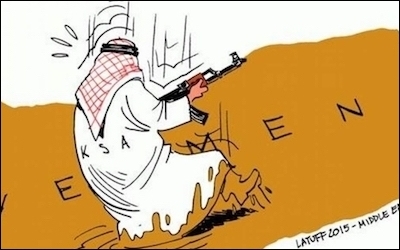by Seth Frantzman
Originally published under the title "Saudi-Iran Careen toward Potential Conflict."
 Less than 24 hours after a major attack by at least 10 drones or cruise missiles on key Saudi oil facilities, the rhetoric in the Middle East is heating up, and the region appears to be on the brink of conflict.
Less than 24 hours after a major attack by at least 10 drones or cruise missiles on key Saudi oil facilities, the rhetoric in the Middle East is heating up, and the region appears to be on the brink of conflict.
After US President Donald Trump spoke to Saudi Crown Prince Mohammed bin Salman, US Secretary of State Mike Pompeo said there was "no evidence" the large attack came from Yemen.
This now means that Saudi Arabia, which is investigating how the attack happened, is positioned to defend itself, but must choose wisely how.
The kingdom's oil production and exports have been disrupted. The facility at Abqaiq, which was struck, is one of the world's largest processing facilities. According to Reuters, the attacks have reduced production by five million barrels per day.
The September 14 attacks have reduced Saudi oil production by five million barrels per day.
Iran has been behind 100 attacks on Saudi Arabia, said Pompeo, adding that Tehran "has now launched an unprecedented attack on the world's energy supply."
At first, the Houthi rebels appeared to take credit for the attack, which was some 1,200 km away from Yemen. This is improbable as there is little evidence that their drones or cruise missiles can fly that far.
It now appears that the attack on Saudi Arabia came from somewhere else. In May, a similar long-range attack was said to have come from Iraq. That Pompeo said there was no evidence the September 14 attack on Abqaiq came from Yemen appears to mean the US has evidence it came from somewhere else. Otherwise how could he rule out the Houthis?
The US has strongly condemned the attack. It sees the oil facility as essential to the global economy. The context here is that since May, Iran has been accused of striking at oil tankers in the Gulf to show that if the US sanctions continue with what Tehran says is economic war against it, then others will suffer as well.
A rising chorus of voices are now pointing to Iran as the major culprit. Senator Lindsey Graham even says that it is now time for the US to put an attack on Iranian oil refineries on the table. He has an "if" in that argument though: "If they continue their provocations." But there is a threat to Saudi Arabia and other US Gulf allies now.
Riyadh in the past has called on regional states for support, such as after a May 14 drone strike in Saudi Arabia. But this one is more serious and has major ramifications. US bases in Bahrain were just 100 km from the attack. It is clear what happened to anyone looking at radar signatures of what carried out the attacks, whether they were drones or cruise missiles.
An escalation has already happened, but Riyadh and Washington must weigh what a response could mean across the Gulf and in neighboring countries.
Most of Saudi Arabia's allies don't want a conflict with Iran.
With many arguing that US-Iran tensions might be reduced with recently fired national security adviser John Bolton's exit, it appears that Tehran just handed the US a big decision-making question mark – and the Saudis will be in the driver's seat to manage the crisis, one that has developed and percolated for years, particularly since May when the US warned of emerging threats. At Abqaiq, the threat finally emerged.
But most of those astride the Gulf don't want a conflict. Trump has been reticent as well, eschewing air strikes in June after a US drone was shot down. Yemen has been an easier proxy war. But Abqaiq is not Abha or Jizan, it is a major strategic asset. Even though it was threatened in the past by terror attacks, this appears to be wholly new in the sophistication of the drone or missile technology used.
No comments:
Post a Comment